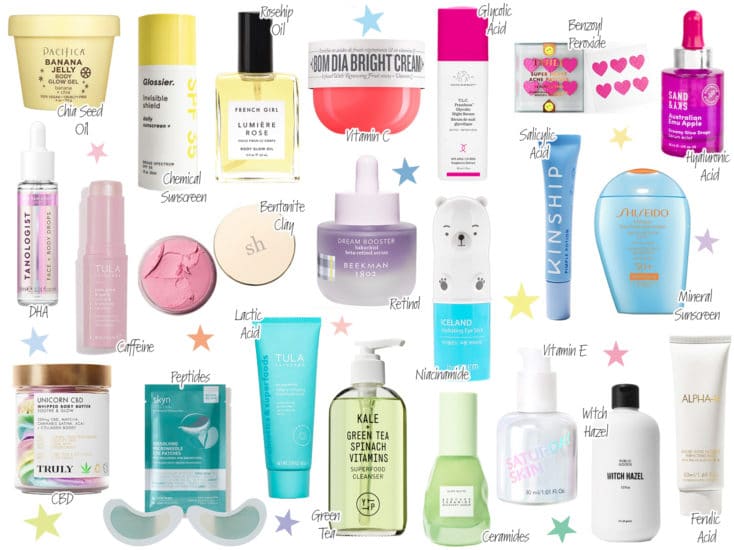With so many beauty products on the market all promising to do specific things, it’s hard to know which ones are worth investing in. What skincare ingredients should we look for in the products we use each day? The answer is going to be different for everyone because we all have different skin concerns. Some of us are dealing with fine lines and wrinkles or uneven complexion. Others are dealing with dark spots, acne or loss of volume. It’s common to attempt to correct these things but if we apply the wrong product it can cause an even bigger issue. Below I’ve outlined 22 beneficial ingredients you should consider adding to your regimen. I talk about how they work and who will benefit most from them. I’ve also given six product recommendations for each.
Alpha Hydroxy Acids
(AHA’s)
Alpha-hydroxy acids are skincare ingredients that come from plant and animal-derived acids. They’re typically found in anti-aging products and used for exfoliating, promoting collagen production and helping with uneven skin tone. There are several types of AHA’s, but two of the most common ones are glycolic acid and lactic acid. Before adding either of these to your skincare regimen you need to stop using retinol, retinoids, or acne medications (prescription and over the counter), two weeks prior. It’s also best to consult with a dermatologist or doctor before doing an at-home chemical peel.
Glycolic Acid

One of the most well-known and frequently used ingredients to help fight the signs of aging. Out of all AHA’s, Glycolic acid has the smallest sized molecules, meaning it can easily penetrate the skin. It works by dissolving dead skin cells so that a new layer is brought to the surface. For this reason, glycolic acid is found in exfoliators and chemical peels. However, that’s not all it does. This AHA has a myriad of benefits. It stimulates collagen production which makes your skin more firm and plump, smooths fine lines and wrinkles, clears pores, boosts hydration, and fights sun damage. Adding this to your skincare routine can help slow down the aging process and even help reverse it. Most skin types can use it in moderation but people with sensitive skin need to be careful because glycolic acid can be highly irritating.
Lactic Acid
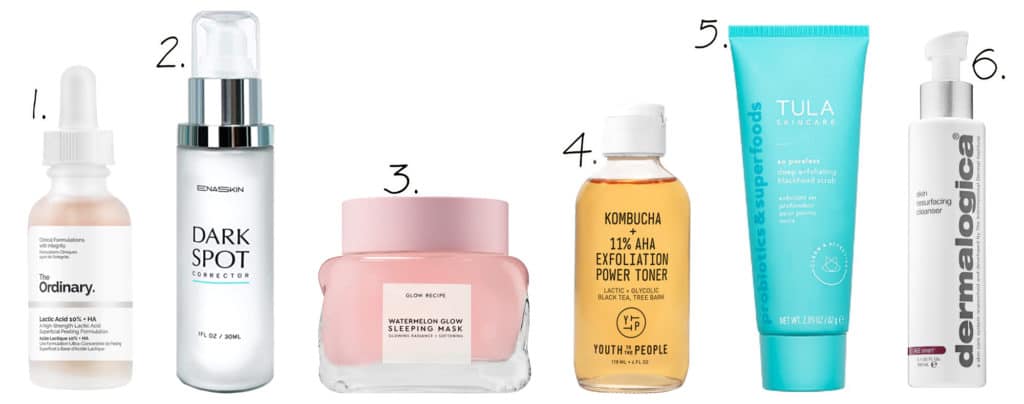
Out of all AHA’s, lactic acid is much gentler because it has a larger molecule. It’s recommended for sensitive skin because it still removes dead skin cells but it’s also not as harsh and irritating as glycolic acid. You can find this naturally occurring chemical in many beauty products. When used regularly, the exfoliating properties reveal a smoother complexion. Some other benefits you can look forward to are an improvement in hyperpigmentation, stimulating collagen production, reducing breakouts, combating wrinkles and plumping the skin. Lactic acid stands out from other AHA’s because it deeply exfoliates while also moisturizing—the best of both worlds! Keep in mind, even though it’s more tolerated than other AHA’s, it can still irritate your skin if you use too high of a concentration.
Benzoyl Peroxide
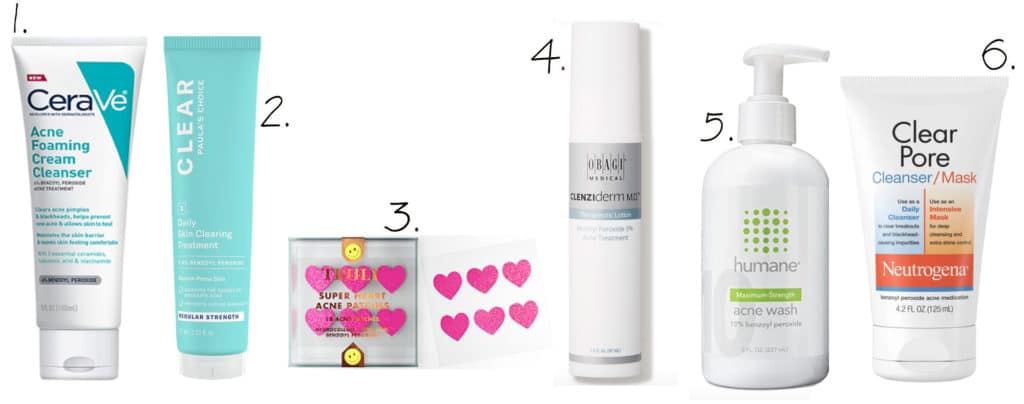
Benzoyl Peroxide or BPO is a common acne fighting ingredient. It works by inhibiting the growth of p.acnes, (the bacteria that causes breakouts). It has a ton of antibacterial benefits like removing dead skin cells, reducing excess oil, and clearing out pores. BPO is found in everything from cleansers to creams and when used properly, it can prevent new breakouts from forming. It’s also a standout ingredient for inflammatory acne, or painful bumps and blemishes. However, it can be quite drying if you are using it for a minor breakout, have sensitive skin, or just want to treat a random blemish. If that’s the case, applying BPO with a low concentration is recommended. If you’re dealing with breakouts on your body, using a high concentrate is okay because the skin is not as sensitive.
Antioxidants
Antioxidant skincare ingredients are beneficial because they protect you from free radical production. (That’s what’s responsible for breaking down collagen.) They also have a calming effect, reduce the appearance of sunspots, and increase moisture retention and hydration. There are many kinds of antioxidants but here are three of the most popular.
Vitamin C
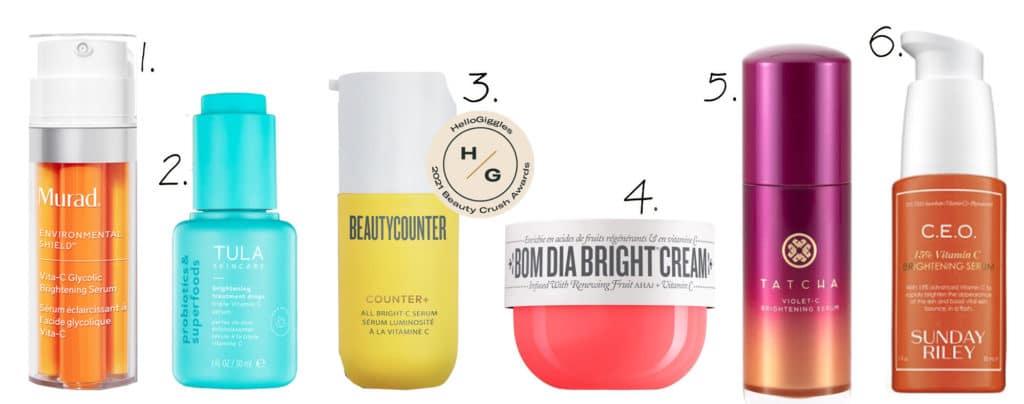
A neutralizer for free radicals, vitamin C aids in your skin’s regeneration process, which helps repair damaged skin cells. It’s commonly found in serums and it’s used to boost collagen production, help with hyperpigmentation, fade dark spots, and prevent sun damage. As you apply it, it triggers the skin’s melanin production to avert discoloration and brighten your complexion. It’s also gentle enough for those with sensitive skin, even at high amounts. However, it’s suggested to start at a lower concentration and work your way up.
Green Tea
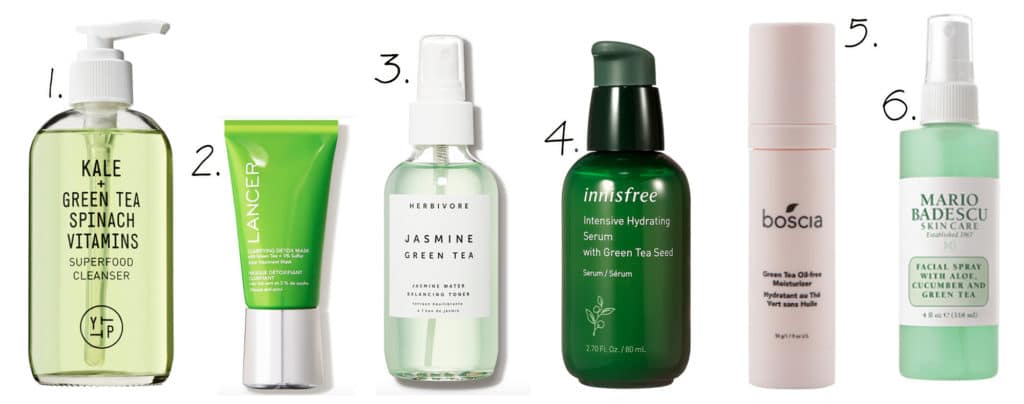
Green tea comes from the leaves and buds of the tea plant. Their active components are antioxidants, polyphenols, and have anti-inflammatory properties. The plant also contains caffeine and tannins, which decreases puffiness by shrinking blood vessels. Green tea is a protective and corrective ingredient that is found in serums, cleansers, moisturizers, masks and eye creams. It soothes and protects your skin and reduces sebum (oil secretions). It also has strong hydrating properties which help with anti-aging. Adding it to your skincare regimen is beneficial to most skin types, however, those with hypersensitivity should be careful.
Vitamin E
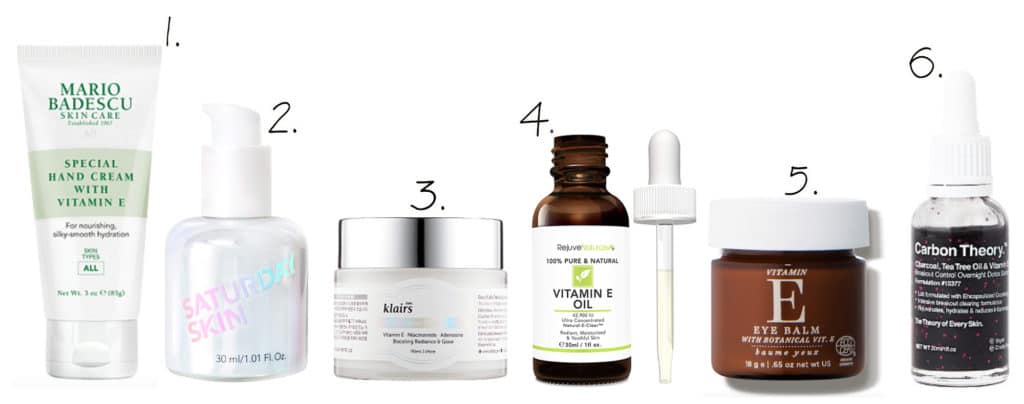
An oil-soluble antioxidant, vitamin E is used topically for a range of skin-related issues (ex: sun damage, scars, stretch marks, dry skin, eczema, etc). It works by restoring skin at the cellular level and speeds up the healing process. Because it’s a natural anti-inflammatory, it has a ton of benefits for most skin types. You can find vitamin E in moisturizers, creams, lotions and oils, but it isn’t advisable to use if you’re prone to acne.
Ferulic Acid
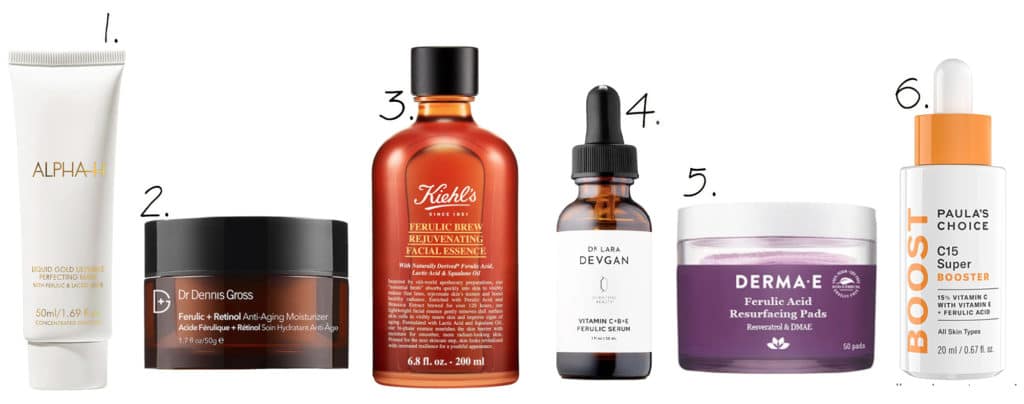
Ferulic acid is another potent antioxidant that is botanically derived from the cell wall of plants and found in serums and pump creams. Like other antioxidants, it acts as a shield against free radicals, but it doesn’t repair damage like some of the others. The benefits of adding ferulic acid to your skincare routine is that it can decrease fine lines and wrinkles, lighten dark spots, and help fight premature aging. It also reduces inflammation that leads to breakouts and corrects hyperpigmentation.
Salicylic Acid
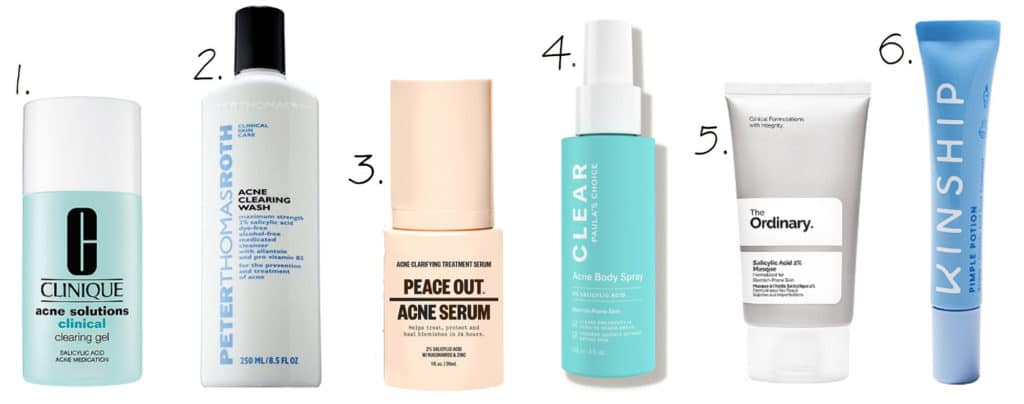
Salicylic acid is a beta-hydroxy acid, or BHA. The structure is oil soluble so it can penetrate easily and rapidly. This makes it a staple in skincare ingredients if you have oily and acne-prone skin (especially cystic acne). On top of that, it exfoliates and breaks apart cell layers, and helps with anti-aging by boosting collagen production. Some other benefits is that it’s an anti-inflammatory and it dissolves skin debris that clogs pores. Adding a SA-based face wash, serum, or all over treatment can help clear up and prevent acne flare-ups. If you have dry or normal skin, SA can be irritating so it’s best to use a spot treatment.
Ceramides

Ceramides are fatty acids that are naturally found in the layers of the skin. These lipids help to hold your skin together by forming a protective layer. They strengthen the barrier by increasing hydration, plumping and firming, while reducing fine lines and wrinkles. Since ceramides are seen as skin-replenishing ingredients they work for most skin types. You can find them in moisturizers, eye creams, serums, and boosters.
Caffeine
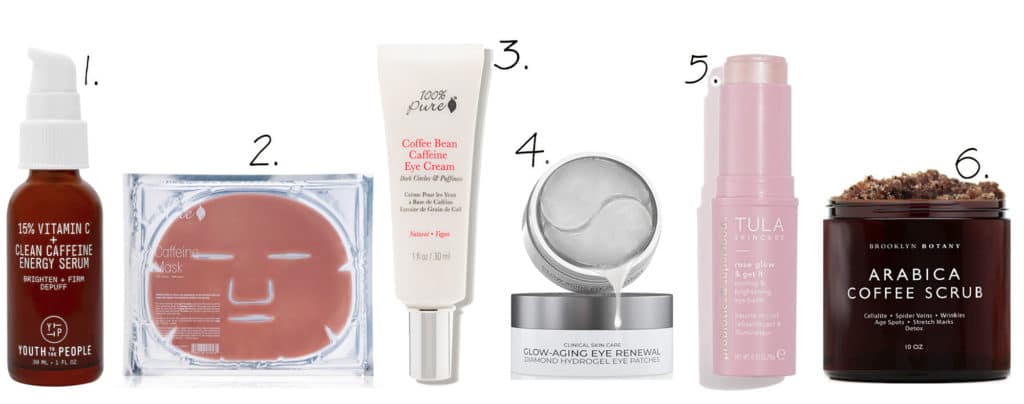
Something a lot of us intake daily to get energized, caffeine is also a familiar (and super beneficial) skincare ingredient. It plays a vital role in decreasing puffiness and improving circulation, which is why it’s regularly found in eye creams. It also helps the appearance of cellulite by hydrating the water content of your fat cells, which will make them look less obvious. Finding products that contain caffeine can smooth, brighten, and boost collagen production. Use in moderation if you deal with redness because the increase in circulation can aggravate it.
Bentonite Clay

Clays are skincare ingredients that are often found in masks, cleansers, and acne-clearing products. One of the most popular is Bentonite Clay. It’s a powder derived from volcanic ash and has a unique ability to soak up excess oil, while also removing impurities. It does this by absorbing toxins and releasing its vitamins/minerals into your body. While it’s great for unclogging pores, it also blocks skin from irritants and it can even clear up allergic reactions. Bentonite Clay is ideal for oily or acne-prone skin and it can be used daily. If you have normal, dry, or sensitive skin, use it in your weekly mask.
CBD
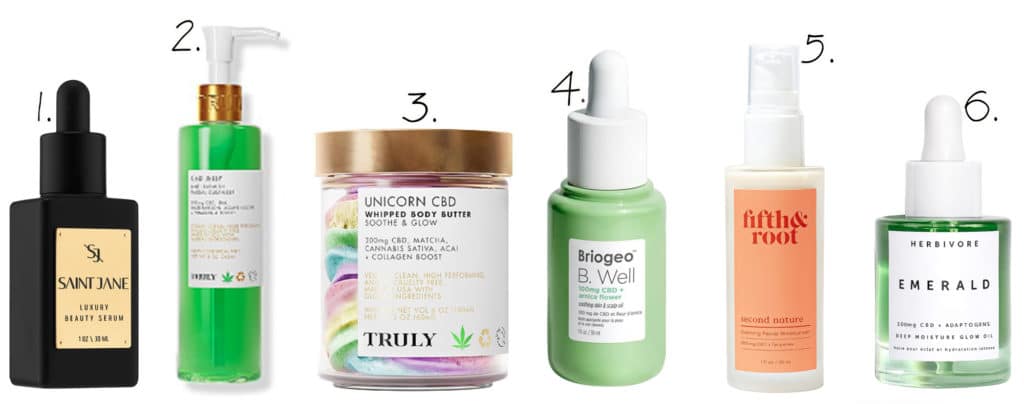
CBD is a cannabinoid present in cannabis that does not produce a high when applied topically. It binds to cannabinoid receptors in the body that then set off reactions in the brain and spinal cord. We see CBD in skincare because of its anti-inflammatory and powerful antioxidant benefits. So, CBD can help regulate oil production, reduce inflammation (breakouts, eczema, and psoriasis) and hydrate dry skin. It’s found in everything from serums to cleansers to essences. Luckily, it can be used by most skin types, however, starting slow to see how you react is recommended just in case it causes irritation. If you’re interested in makeup that contains CBD, here’s a list of my favorite products.
Dihydroxyacetone (DHA)
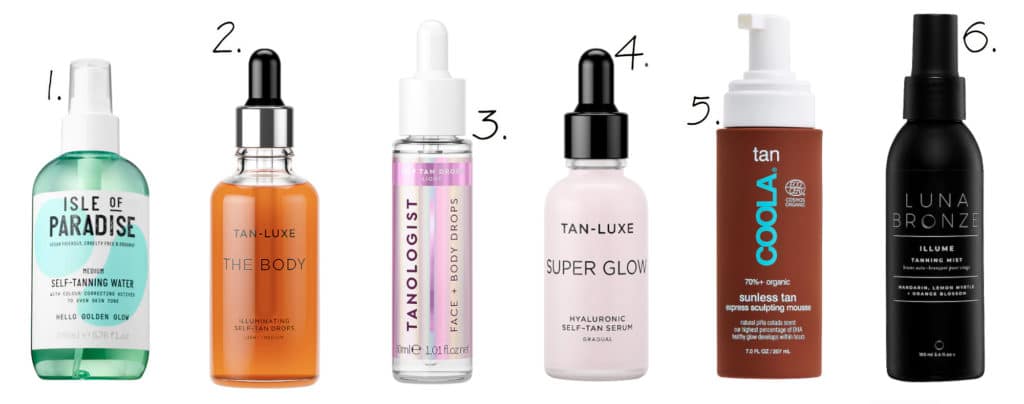
DHA is a chemical used to make sunless tanning products. It comes from sugar beets, sugar cane, and reacts with skin-surface amino acids by darkening the top layer of skin. Sunless tanning products contain anywhere from 1% to 20% DHA. Store bought products have significantly less (usually less than 5%), while professional products (think spray tans applied at a salon or spa) usually contain 5% to 20%. This means that the lower the DHA concentrate, the lighter the tan and vice versa. Before applying sunless tanner, exfoliate first which will help you achieve an even glow. I like tan drops because I’m able to control the intensity of my tan. Since sunless tanners don’t contain any SPF, make sure you apply sunscreen before heading outside.
Hyaluronic Acid
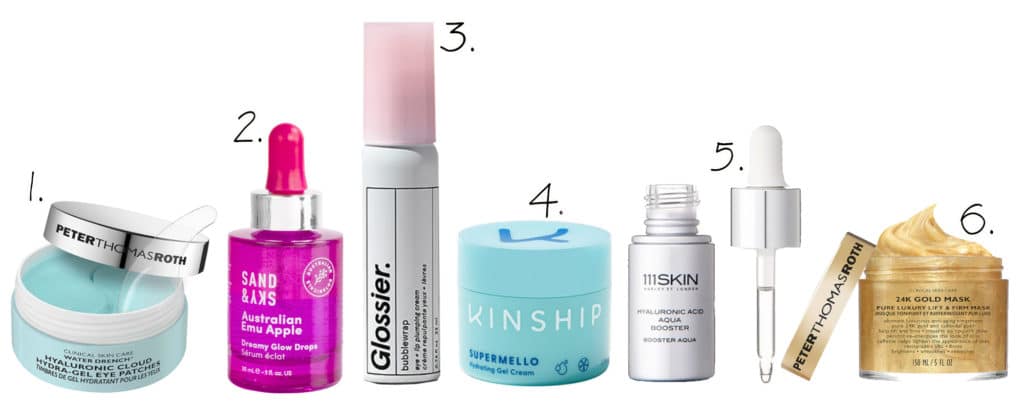
A sugar molecule naturally found in the skin, hyaluronic acid (or HA for short) works by binding water to collagen which plumps your skin and gives it a dewy glow. HA can also be applied topically or injected (a common ingredient in facial fillers). When it’s applied to the surface layer, it locks in moisture by penetrating deep into the skin. It can firm, soften fine lines and wrinkles, and it’s non irritating, so it’s good for all skin types. However, it’s especially useful for dry or aging skin because of its ability to boost collagen production and hydrate. In a previous post, Kristie discussed the benefits of serums and then she talks about how she applies HA right before using her derma-roller which you can read in detail here.
Niacinamide
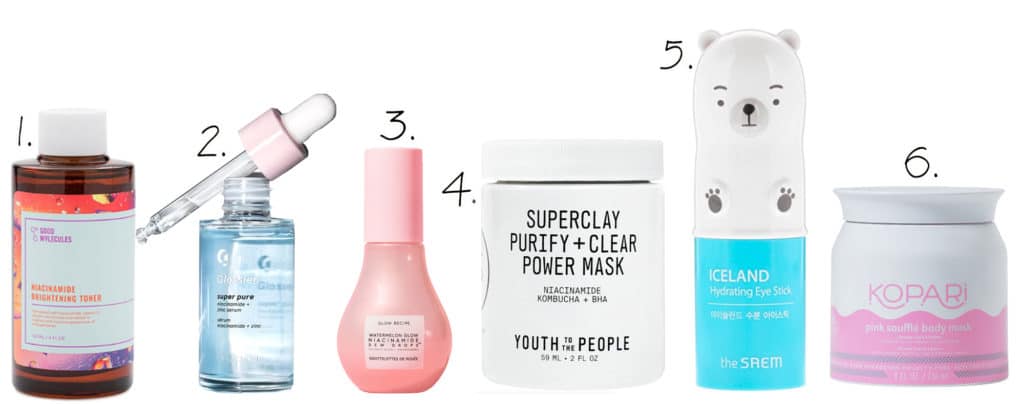
Niacinamide is a form of Vitamin B3. When applied topically, it can brighten your complexion, prevent signs of aging, reduce acne, repair your skin barrier, and it’s great for anyone with redness or sensitive skin. It also helps to restore cellular energy, improve damaged DNA, and fights off stressors that lead to a breakdown. There are some risks though. If it’s used in high concentration, it can cause irritation.
Oils
Facial oils are a recommended extra step for moisturizing and reviving dull and tired skin. They’re often suitable for all skin types, even acne-prone. While there are a ton of options, two of the most popular (along with my favorites) are chia seed oil and rosehip oil.
Chia Seed Oil

Chia seed oil is a powerhouse composition of fatty acids and strong antioxidant properties. It’s resistant to oxidation, so you can often find it in moisturizers, eye creams, lip products, and hair care. Using it regularly has many benefits like protecting from free-radical damage, improving dryness, moisturizing and increasing hydration. Its versatility makes it beneficial for all skin types, especially sensitive, inflamed, dehydrated, and combination.
Rosehip Oil
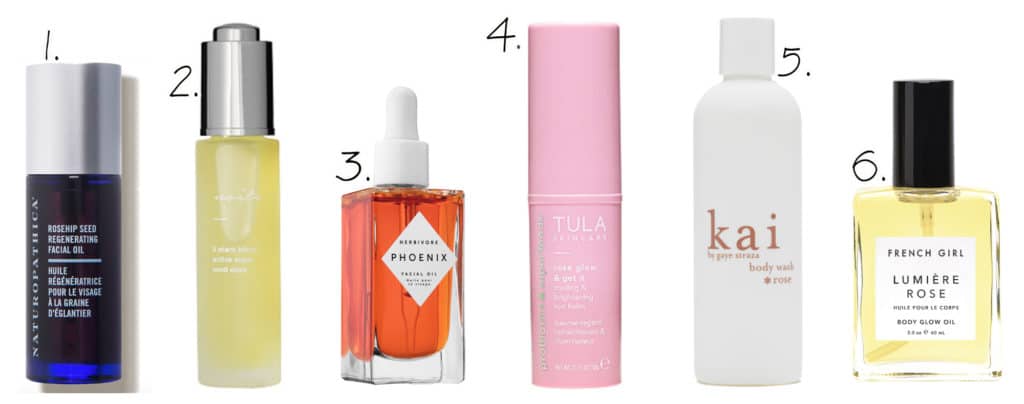
Derived from the small fruit that sits under the rose plant, rosehip oil has many hydrating and anti-aging benefits. You can often find it in serums, facial oils, and creams. It has high levels of essential fatty acids like Omega-3 and 6, which soften and improve the skin barrier. Rosehip oil regenerates and heals, increases collagen production and brightens and evens out skin tone. It also can fight free radicals, hydrate, calm inflammation, and is helpful for if you deal with breakouts regularly.
Peptides
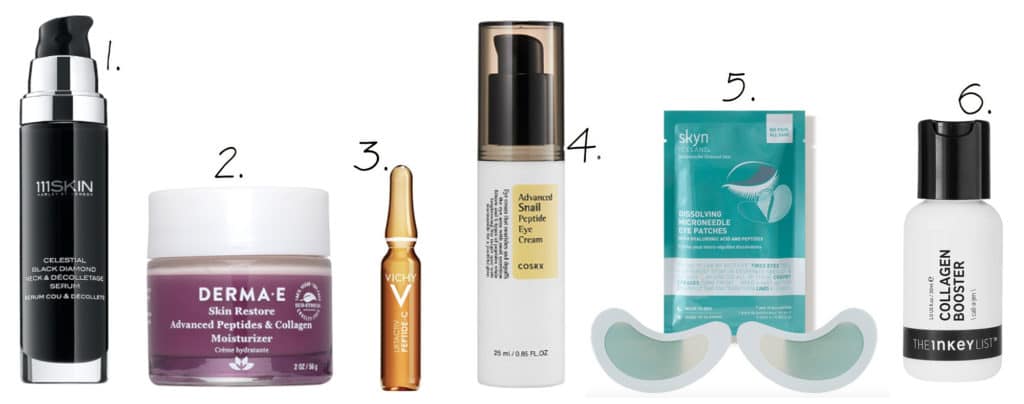
Peptides are strings of amino acids that are the building blocks of proteins like collagen and elastin. These proteins handle how our skin looks and feels while affecting the firmness, texture, and strength. Peptides as a skincare ingredient trigger skin cells to build more collagen and elastin so that our skin appears younger looking. They’re found in a wide range of products but they’re most beneficial is in serums, moisturizers, boosters, eye creams. Peptides are safe for all skin types, but they shouldn’t be used in combination with AHA’s because it will reduce their efficiency.
Retinol

I think it’s safe to assume that mostly everyone has heard of retinol and its effectiveness to treat (and prevent) aging. Applying it nightly can help reduce wrinkles, erase fine lines, and fade dark spots. It works by supporting healthy cell production that positively affects our skin’s texture. Some of the other benefits is that it can fix hyperpigmentation, minimize pores and brighten a dull complexion. It’s recommended to add this skincare ingredient to your PM regimen when you’re in your mid to late-twenties (at the first signs of aging). Start by using it two nights per week, then three, and as your skin gets used to it, work your way up to nightly. Avoid using AHA’s with retinol because the combination will cause irritation. If you’re applying it as a serum or booster be sure to use moisturizer right after (retinol can lead to dry skin). Also, don’t forget your SPF; retinol can cause skin sensitivity.
Sunscreen
It’s much easier to prevent damaged skin than it is to treat it. That’s why sunscreen is the most significant product you can use. When you apply it, you’re protecting your skin against harmful UVA and UVB rays. Those are what is responsible for sun damage, such as wrinkles, sagging, dark spots, and skin cancer. Dermatologists recommend at least an SPF 30 that has a 97% guard. When talking about sunscreen, it’s important to discuss the differences between mineral and chemical based.
Mineral-based

Mineral sunscreens contain titanium oxide, zinc oxide, or a combination of the two. They work by sitting on top of the skin barrier and deflecting and scattering the harmful UVA and UVB rays before they can do any damage. These sunscreens act as a filter so as soon as you apply them you can go out in the sun. They’re usually a thick white substance but because they sit on your skin’s surface, they need to be reapplied often.
Chemical-based
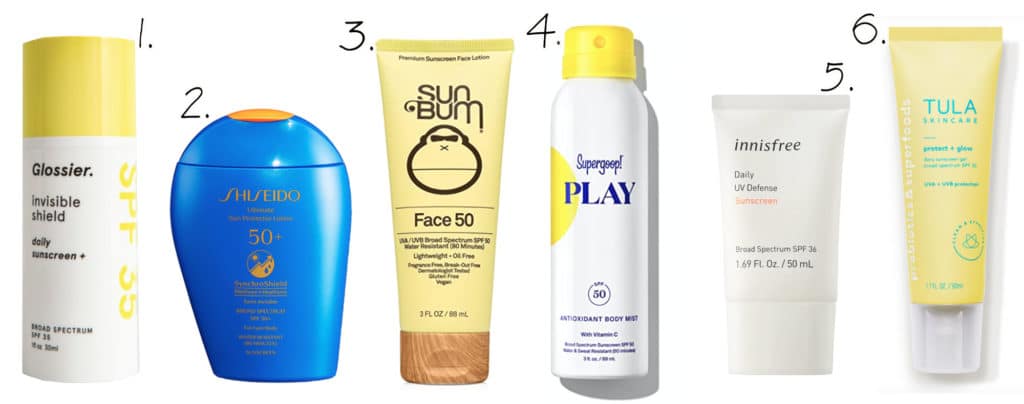
Chemical sunscreens are absorbed into your skin on a deeper level, so they work differently than mineral based products. Rather than sitting on the skin’s surface, they take the harmful UV rays and change them into heat, then they release the heat from your skin. However, they may not protect against all UVA rays. There are also some other things to consider. Chemical sunscreens may clog pores, irritate sensitive or rosacea-prone skin, and may cause an increase in sunspots. If you choose to go with this type of protection, apply it 20 minutes before going outside so it has time to activate.
Witch Hazel
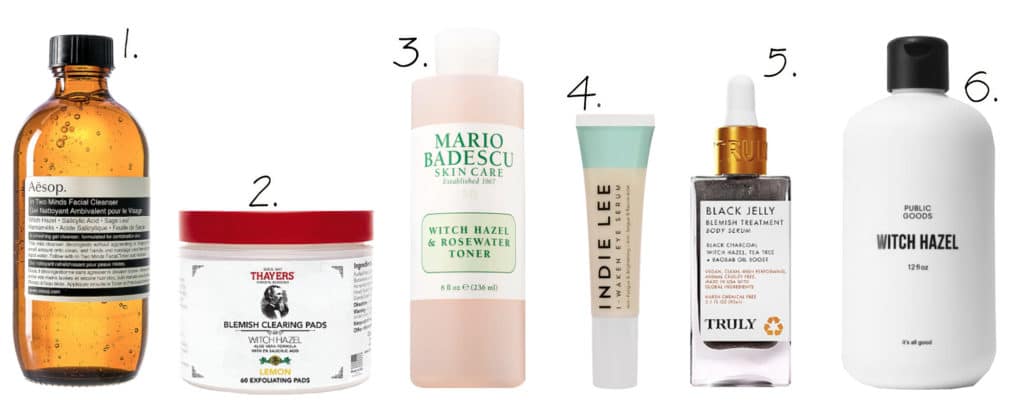
A natural and powerful skincare ingredient, witch hazel is extracted from botanicals and has a plethora of benefits. It’s known for its anti-inflammatory and antioxidant properties. It can soothe your skin and help heal acne by reducing excess oil. If you’ve been in the sun too long witch hazel can help calm sunburnt skin. This potent ingredient can minimize pores which is why it’s often found in toners or cleansers. If you have dry skin, use sparingly; witch hazel is best handled on acne-prone skin.
Hopefully, after you’ve read about these amazing skincare ingredients, you have a better understanding of what they do and how they can benefit you. Next time you’re shopping for products, be sure to read the labels thoroughly. Lots of companies will add “fillers” and market them by advertising the good essentials they contain. As you look at the ingredient list, avoid buying anything that has aluminum, DEA, MEA, TEA, mineral oil, parabens, phthalates, siloxanes, sulfates, and synthetic fragrances.
Disclaimer: The information provided here is based on our research, speaking with professionals, and from our own personal experiences. Please be advised that we are not medical doctors or experts in the field.
*This article contains some affiliate links.
